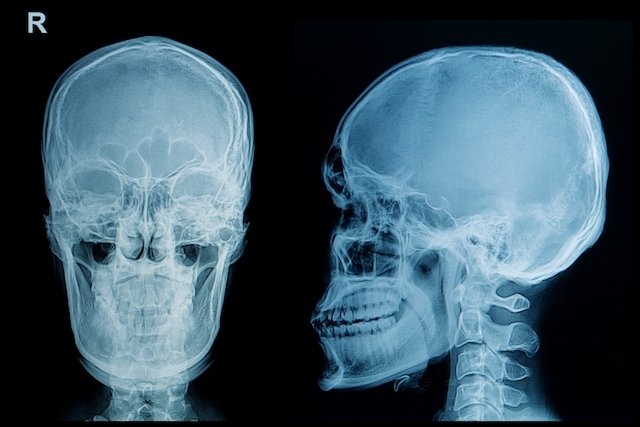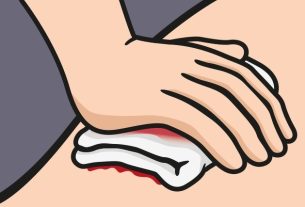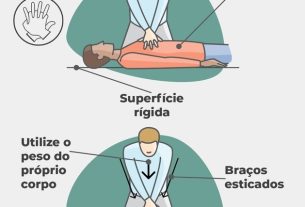A skull fracture is any type of fracture that occurs in one of the bones of the skull, which is most common after a severe blow to the head or due to a fall from a great height.
In these cases, it is also common to develop a head injury, which happens when the brain is also injured, which can lead to fainting and even more serious complications, such as loss of vision, loss of movement in a limb and, in some cases, with the.
Therefore, a skull fracture is considered an emergency situation that must be treated and evaluated as quickly as possible in the hospital, even if it is not certain that a fracture has actually occurred.

Main symptoms
The main symptoms of a skull fracture are:
- Headache at the site of impact;
- “Bump on the head;
- Nausea and vomiting;
- Fainting or confusion;
- Loss of balance.
In addition, there may also be more serious symptoms such as bleeding from the nose, eyes or ears, very intense headache, exaggerated swelling of the area and the presence of purple spots on the scalp or face. Find out more symptoms of fractures.
In any case, you should always go to the hospital after hitting your head hard, to have a neurological assessment and assess whether there is any type of brain injury that needs to be treated.
How to confirm the diagnosis
The diagnosis of a skull fracture must always be confirmed in the hospital, as it is necessary to take a cranial X-ray to confirm the presence of the fracture, especially if there is no change in the shape of the skull. In addition, other tests are often necessary, such as computed tomography and magnetic resonance imaging, to identify whether lesions have appeared in the brain that need to be treated.
Consult your nearest doctor to assess the severity of the fracture so that treatment can begin more quickly:
Taking care of your health has never been easier!
Main types of skull fracture
The types of skull fracture can vary between complete or partial, depending on whether there was a complete fracture of the bone or not. Furthermore, depending on where it occurs in the structures it affects, the fracture can also be classified as follows:
- Closed fracture: happens when the scalp remains intact, without any wounds;
- Open fracture: appears when there is a wound on the scalp through which a piece of bone can come out;
- Fracture with depression: when the two parts of the bone turn inwards, towards the brain;
- Basal fracture: appears in the area at the base of the skull around the eyes, nose, ears and top of the neck.
Normally, in the basal type of fracture, it is possible to observe a very common characteristic of this type of fracture, which is called “panda eyes” due to the appearance of purple spots around the eyes.
How the treatment is carried out
Skull fracture treatment may vary depending on the severity of the injury and the presence of symptoms. When the fracture is not very large and does not cause symptoms, the doctor may simply recommend constant monitoring to ensure that the bones are healing, without requiring specific treatment. However, during recovery, any type of blow to the head should be avoided. See what to do to recover from a fracture faster.
On the other hand, if symptoms appear, the doctor will carry out an assessment of the complexity of the fracture to check whether it is better to perform surgery or keep the fracture healing naturally, recommending just a few medications to alleviate the symptoms, especially the headache.
However, if the fracture is more complex, surgery may be necessary to correct the deformity and allow the bone to heal properly.

Sign up for our newsletter and stay up to date with exclusive news
that can transform your routine!
Warning: Undefined array key "title" in /home/storelat/public_html/wp-content/plugins/link-whisper-premium/templates/frontend/related-posts.php on line 12
Warning: Undefined array key "title_tag" in /home/storelat/public_html/wp-content/plugins/link-whisper-premium/templates/frontend/related-posts.php on line 13



